Which wallpaper is better for a nursery: paper-based, non-woven or vinyl?

Every parent wants his child to grow up in good conditions. The baby can spend most of the time in his bedroom. It is desirable that all materials used in the interior of the children's room are environmentally friendly. This also applies to wallpaper.
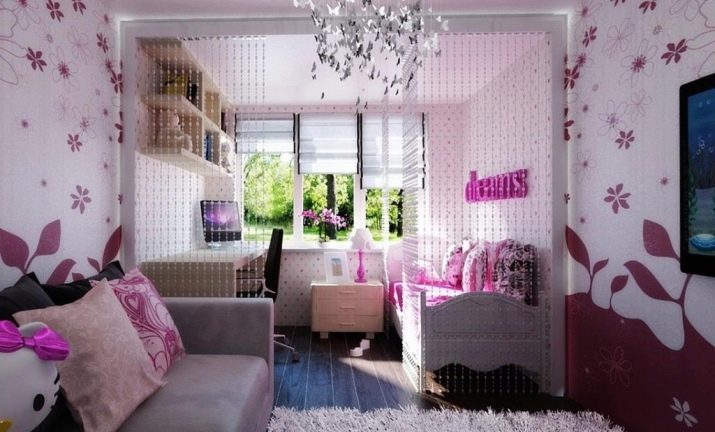

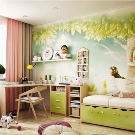
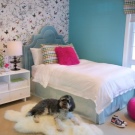
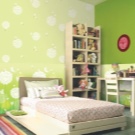
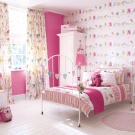
Paper
This is a classic type of wallpaper that has been known for many years. Many people remember the Soviet wall coverings, which are peeled off when recycled along with the plaster. Nowadays, such interior decoration tools are rarely used, but they have certain advantages when used for a children's room:
- made of natural materials: paper cannot harm even the most sensitive little person;
- allow free circulation of moisture and air due to the microporous structure of cellulose;
- suitable for children prone to allergies;
- are relatively inexpensive;
- it is in this category that there are a huge number of children's colors.
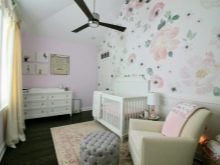
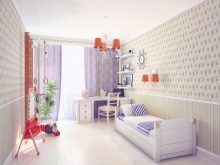
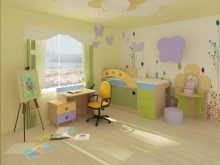
In addition to the pluses, there are certain disadvantages of children's paper wallpaper.
- Perfectly smooth walls are needed for gluing them. If this condition is not met, then all the surface bumps will be visible at a glance after decorating with such wallpaper.
- The joints between the pieces of wallpaper are clearly visible, since in dry form the paper shrinks after the wallpaper glue dries.
- Difficulty in their installation: paper wallpapers are strongly deformed when soaked, bubble, and the edges can break. Usually you have to call professionals in order to really high-quality pasting the walls with such a decor.
- If the nursery is located on the sunny side, then they will quickly fade under the influence of ultraviolet radiation.
- They cannot be washed from various household contaminants.
- They quickly lose the quality of their appearance due to natural wear and tear.
- Due to temperature changes and long operating times, they can come off the wall.
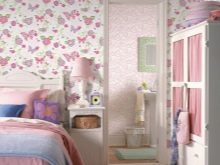
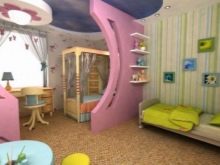
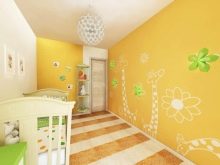
There are two types of paper wall coverings: simplex and duplex. In them, respectively, one or two layers. The latter type is more durable both during gluing and during operation. Therefore, when buying, it is better to pay attention to it. The price for a higher quality type of wallpaper is also higher.
For the nursery, you can use the following version of paper wallpaper: duplex look with acrylic foam. They can be painted after several years of use and wiped with a slightly damp cloth, which is convenient and economical.
The child grows, his color preferences can change, and such a coating will always easily change the color of the interior.
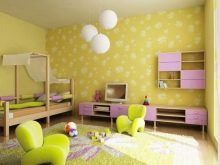
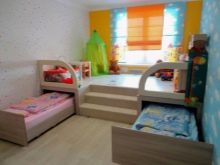
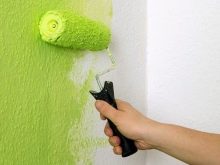
Non-woven
Flizelin is a cellulose-based non-woven fabric with the addition of artificial or natural fibers. Due to the manufacturing technology, the material becomes very durable.
The advantages of using non-woven wallpaper in the children's room are:
- excellent resistance to wear and damage, unlike paper ones (this quality also affects the convenience of gluing such material);
- are considered fire resistant, which increases the safety of the home in the event of an accidental fire in the room;
- they can be washed with soapy water and a brush, which is very important for keeping the nursery clean;
- ease of installation: they are glued directly to the wall without preliminary lubrication on the floor with wallpaper glue;
- when removing this coating in the future, it is enough to pry them with a spatula, a non-woven layer will remain on the wall, on which new wallpaper can be glued;
- increased service life.


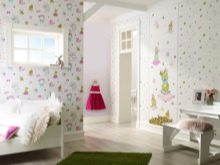
Negative qualities of non-woven coating:
- they do not allow air to pass through and can provoke the appearance of mold under their surface;
- they practically do not hide the unevenness of the surface of the walls, since their thickness is small;
- relatively high cost;
- the embossed surface of such wallpaper tends to accumulate dust, therefore, they must be regularly wiped with a damp cloth or vacuumed;
- if the color of the wall is not uniform, then through the non-woven wallpaper this can become visible again due to their small thickness.
If you use non-woven wallpaper for a nursery, then you can see the main advantage in them - they can be washed and painted several times, thereby updating the decorative coating.
Some types of such wallpapers are even specially adapted for use by children as an easel. You can draw on them with special markers, which can be erased with a damp cloth and detergent without leaving a trace.
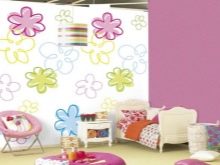
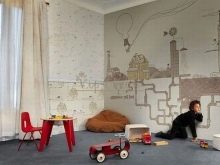
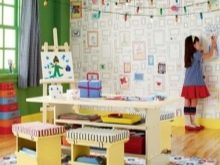
Vinyl
Vinyl, or polyvinyl chloride, is a synthetic polymer that is used in almost all areas of human activity.
Wallpaper made of this material usually consists of three layers:
- top - the actual vinyl;
- medium - it masks the unevenness of the wall;
- bottom - non-woven or paper.
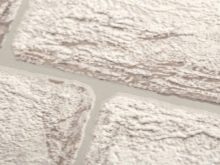
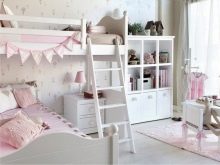
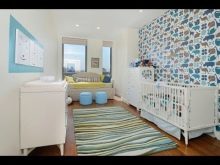
Advantages of vinyl-look wallpaper when used in a nursery:
- increased resistance to dirt and damage, like non-woven wallpaper;
- hide small irregularities in the wall due to their thickness;
- long service life;
- do not fade when exposed to sunlight;
- do not tear or peel off from temperature changes;
- due to the thickness, they form a small noise-insulating layer, which is especially important in the nursery;
- easy to stick, as they are most often sold on a non-woven base and, accordingly, are glued directly to the wall;
- a variety of textures: the top vinyl layer can imitate embossed plaster, fabric, patterns.
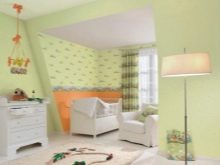
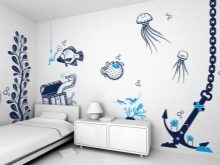
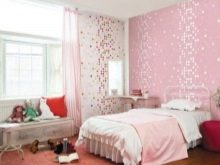
Cons of wallpaper for a nursery of this type:
- are quite expensive relative to non-woven and paper wallpaper;
- few children's design options for boys and girls, mostly adult colors and patterns;
- may be harmful to the health of children, as some types of cheap vinyl wallpaper can emit harmful volatile substances into the ambient air (it is believed that low-quality vinyl can release formaldehyde within 4 years from the date of application).
It is better to use hard (evaporated) vinyl for decorating a children's room. All harmful substances have been removed from it, and such wallpapers have a European quality certificate.
When buying, it is also necessary to pay attention to whether there is perforation in such wallpapers, that is, to look at them in the light. Small holes along the entire area of the roll are needed for natural ventilation, and mold and mildew do not appear behind the wallpaper.
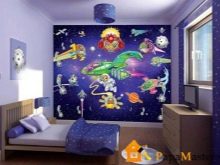

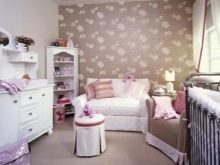
What surface should you choose?
The main criteria when deciding what kind of coating will be on the walls of a children's room are environmental friendliness and ease of use. Therefore, the choice is somewhat complicated.
It is believed that paper wallpaper is the best option due to the naturalness of the material. But they cannot be washed. And they certainly will not withstand children's paintings on the walls and pasting posters. But these wallpapers are relatively inexpensive and can be changed frequently.
If we talk about non-woven wallpaper, they are easy to clean and are also made of harmless material. But their problem is the thickness: they will not hide the unevenness of the wall. The price is not much higher than that of paper ones.
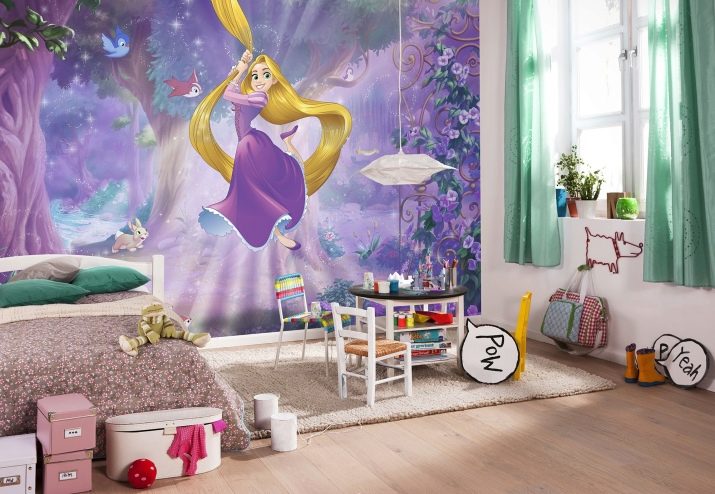

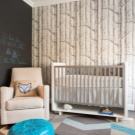
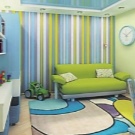
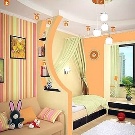
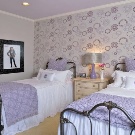
Vinyl wallpaper can be a source of evaporation of harmful substances. If you take eco-friendly vinyl, you will have to stock up on a large amount of money.
As a result, paper and non-woven wallpaper remains the best decorative wall covering for a children's room. There are a large number of colors of these types on the market, which allows you to choose an option for every taste and wallet.
For tips on how to choose a wallpaper for your nursery, see the next video.













The comment was sent successfully.